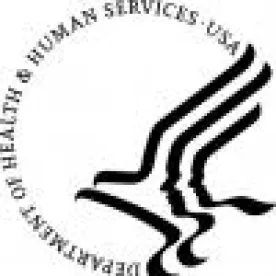On Jan. 8, 55 general acute care hospitals from 19 different states filed suit against U.S. Department of Health and Human Services (HHS) Secretary Sylvia Matthews Burwell.
The suit alleges that the Centers for Medicare & Medicaid Services’ (CMS) decision to institute a 0.2 percent decrease in hospital payment rates from FY 2014 through FY 2018 violated the Administrative Procedure Act (APA) because the rule was finalized without following proper notice and comment procedures. The plaintiffs’ further allege that the rule was arbitrary, capricious and exceeded HHS’ authority in violation of the APA. The plaintiffs are asking a Washington, D.C., federal court judge to vacate the rule, published in the Federal Register on Aug. 19, 2013, which includes the rate decrease and CMS’ “2 Midnights” policy. The “2 Midnights” policy requires patient hospital stays to last for more than “two midnights” in order to qualify for reimbursement under Part A’s inpatient rates instead of under the lower outpatient services rates tied to Part B reimbursement.
The “2 Midnights” policy directly impacts the case at hand because the 0.2 percent, or roughly $220 million annually in aggregate, rate decrease was instituted in response to CMS’ prediction that the rate of inpatient stays would subsequently change following the institution of the “2 Midnights” policy, according to the plaintiffs’ complaint. Accordingly, the decision to implement the reimbursement rate change was made in an effort to offset the predicted increase in reimbursements paid out under Part A.
The plaintiffs assert that the rule’s “time-based approach” to determining at what point a patient’s stay in a hospital becomes an “inpatient stay” is deeply flawed and unnecessarily inconsistent across CMS guidance documents. They conclude that the ambiguity as to whether the determination is made strictly utilizing a time-based approach, utilizing an intensity-based approach, or a blend of the two, makes it impossible to predict whether hospitals will “consider the intensity level of services when deciding [whether] to admit patients or the extent Medicare contractors will take [such considerations] into account when determining to admit or deny stays.” Plaintiffs further argue that the rule is unclear as to what sufficiently qualifies as a “one-day inpatient stay” such that Medicare contractors will allow hospitals to bill for those claims.
Additionally, the rule requires that the “physician have a reasonable expectation that the beneficiary will cross two midnights” without setting forth “any presumption of correctness (or error) of the physician’s order for admission.” The complaint alleges that this has inappropriately created an “audit guideline” merely requiring review of “whether an inpatient stay was appropriate … if the beneficiary crossed 2 midnights in the hospital” instead of requiring Medicare contractors to determine whether the services provided during that stay were “reasonable and necessary.”
The complications arising from this rule provide a disincentive for hospitals to bill for inpatient stays due to the potential for rejected claims, the burden of appealing and/or refiling rejected claims, and potential liability under the False Claims Act and Civil Monetary Penalty Statue.
This suit, Asante Rouge Valley Medical Center et al. v. Sylvia Burwell (1:16-cv-00032), follows a string of similar suits filed in the past year. In November, six Ohio-based hospitals filed a similar suit asking a federal judge to vacate the final rule instituting the 0.2 percent cut to reimbursement. The hospitals modeled their suit after a prior consolidated group action which prompted a D.C. federal judge to hold that the rule was promulgated in violation of the APA. The judge in that case remanded the rule to HHS to further explain its reasoning and to seek additional public comments. The rule is currently open for public comment through Feb. 2, and final notice is expected mid-March.




 />i
/>i
